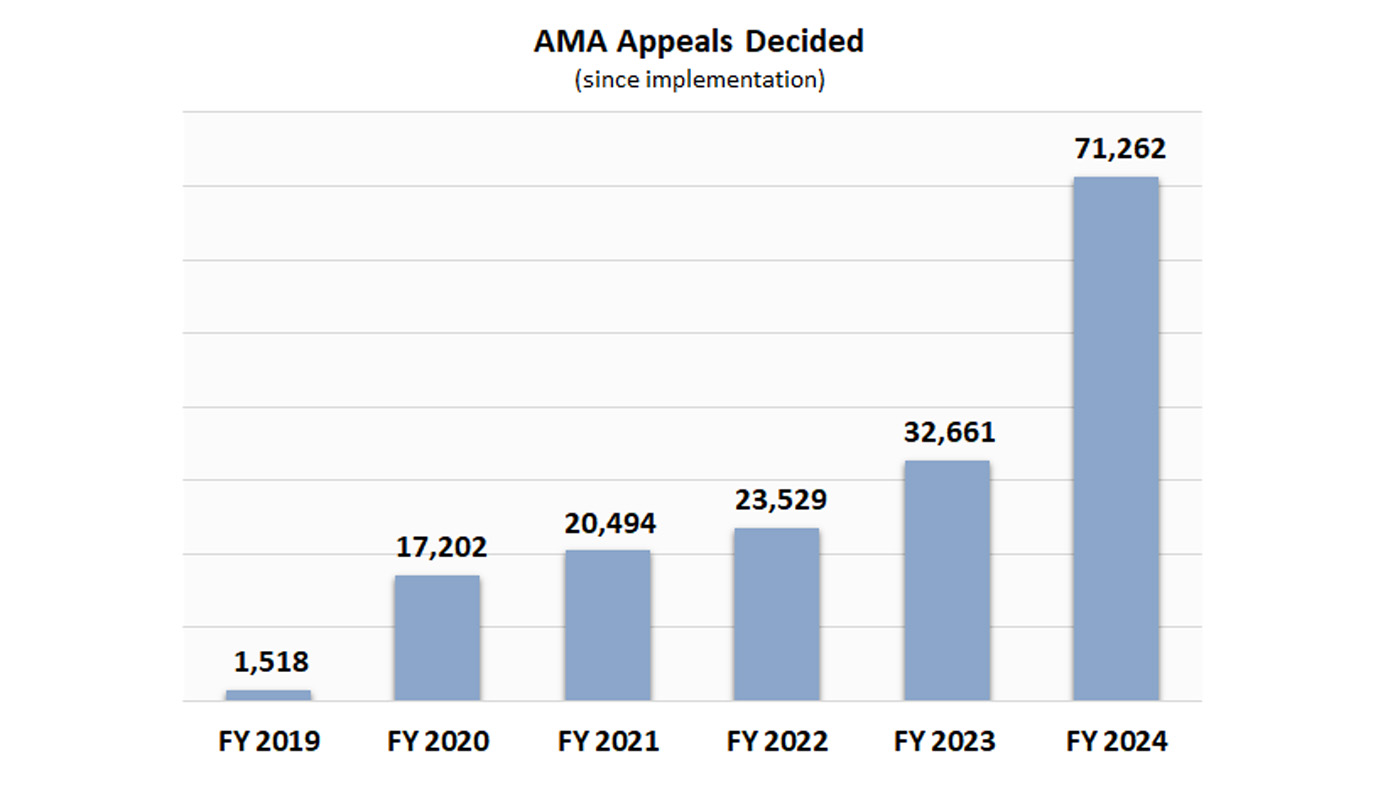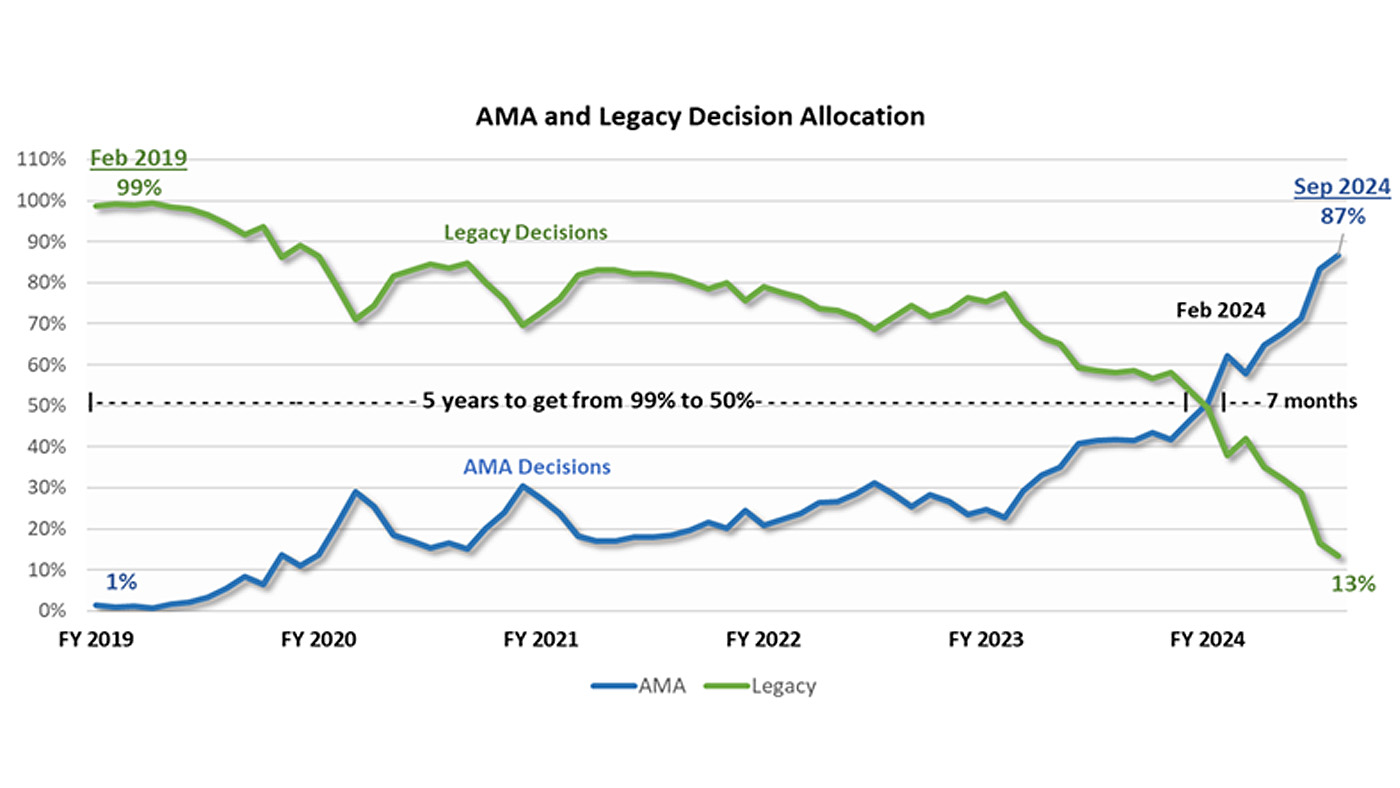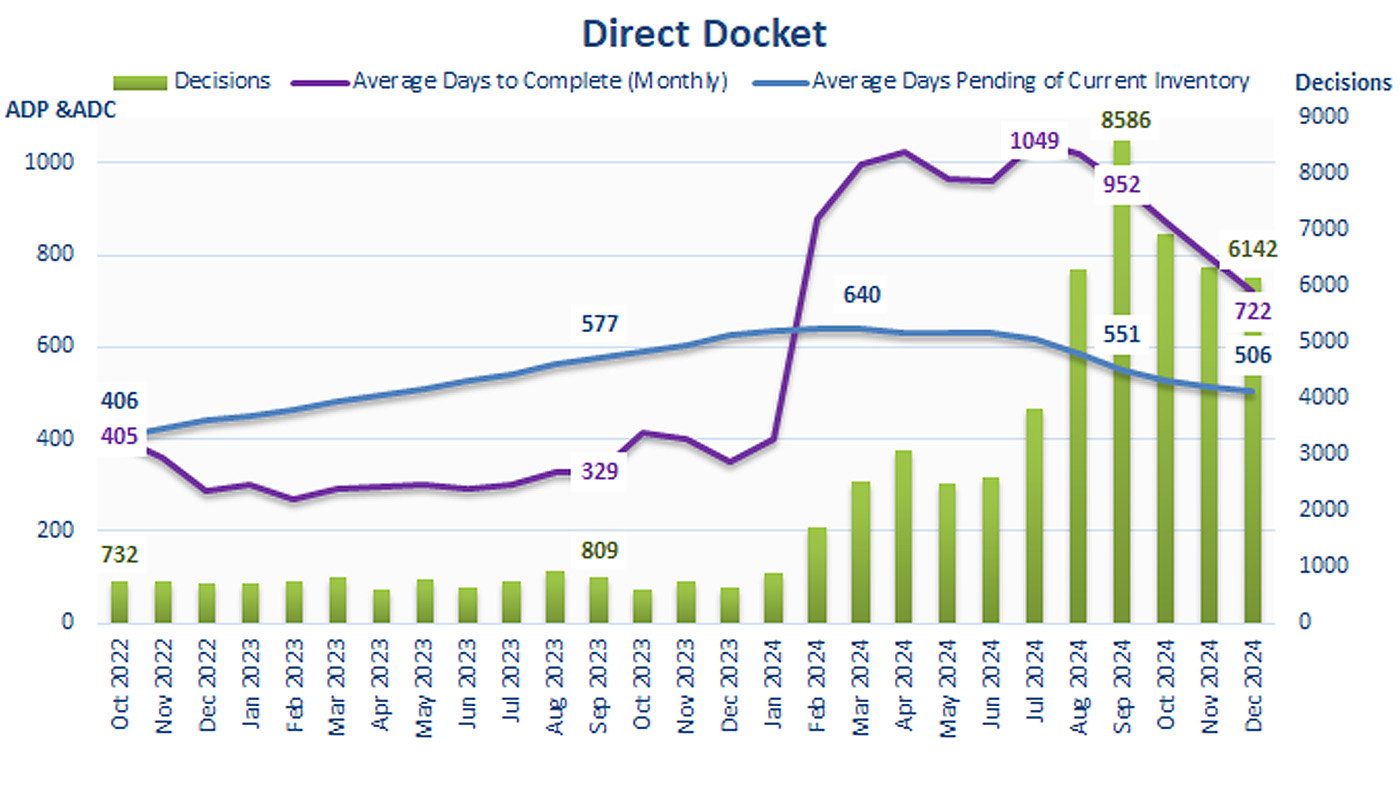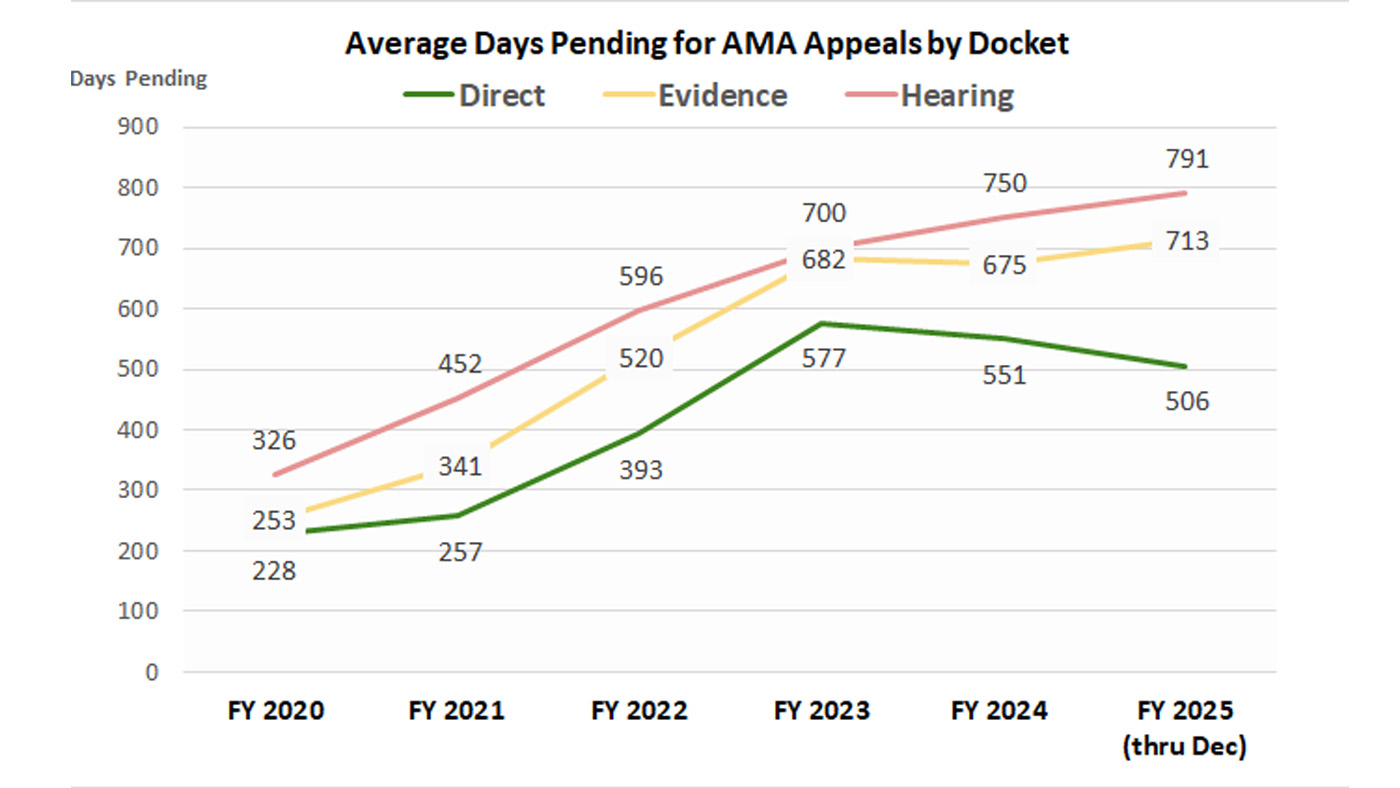Board of Veterans' Appeals
More Board Personnel Address Pending AMA Appeals & Wait Times
Thanks to investments from Congress, the Board was able to hire substantially more judges, attorneys, and staff during FY 2022 – FY 2023 to help reduce pending appeals and decrease wait times.
As shown in the chart below, the Board has been able to issue exponentially more AMA decisions in the past two years because of these increases in personnel. For example, only 25 percent of the Board’s decisions issued during FY 2022 were AMA appeals and that number grew to 32 percent the following year in FY 2023. During FY 2024, the Board more than doubled the previous year’s percentage by issuing over 70,000 AMA decisions – more than the combined total of AMA decisions issued during FY 2022 and FY 2023. In FY 2025, these numbers of AMA decisions will continue to grow.

TITLE GOES HERE
The three-year ramp-up of Board personnel created a fundamental shift in the Board’s ability to transition from adjudicating predominately older Legacy appeal system cases to adjudicating predominately AMA appeals filed since the new law went into effect in February 2019. The persistently large inventory of pending Legacy appeals kept displacing how many newer AMA appeals could be adjudicated, but the following graph demonstrates how the Board was able to change that dynamic substantially during FY 2024. It took 5 years to change the decision output ratio from 99% Legacy appeals versus 1% AMA appeals to a 50/50 ratio in February 2024. However, it has taken only 7 months to reverse the trend with roughly 87% AMA appeals adjudicated vs. 13% Legacy cases adjudicated.
While the Board’s Congressional Reports from two years ago predicted this switch from predominately Legacy appeal adjudications to a majority of case output being AMA appeals decisions, the following graphic highlights very rapid changes in the pace of AMA adjudications that occurred during FY 2024:

TITLE GOES HERE
Understanding these emerging workload trends are important to address stakeholder concerns about AMA timeliness. After the AMA was implemented, the Average Days Pending (ADP) for those cases continued to consistently climb as the Board was required to focus on Legacy system appeals and Advance on Docket (AOD) workloads. Once the Board was able to focus more resources to adjudicating higher numbers of AMA cases, especially the larger percentage of non-AOD AMA appeals that were pending the longest, the Average Days to Complete (ADC) metrics started to rapidly climb because the Board was adjudicating mostly older cases.
It is important to understand the relationship between the Board’s reported metrics of Average Days Pending (ADP) and Average Days to Complete (ADC) for each of the Board’s dockets. The ADC is simply an average of how long it took the Board to adjudicate a group of cases decided during a specific period time. In other words, the ADC is just a measure of how long it took to decide a group appeals during the past week, or month, or year. It is not a measure of how long the average appeal has been waiting, which is the ADP for all those appeals not yet decided. Trend changes in the ADP numbers are a leading indicator that the Board is successfully reducing the number of non-priority AMA cases, starting with the ones waiting the longest. In other words, the ADP falls as the Board adjudicates all the non-priority AMA cases that have been pending the longest. The ADC belatedly follows the same pattern, as newer cases are being worked after the older cases are adjudicated.
The ADC numbers can vary drastically, especially because the Board is currently adjudicating the oldest pending non-AOD cases under AMA at a very accelerated rate. For example, the monthly ADC for AMA Direct Docket cases was around 390 days in January 2024, then rose very rapidly during the next 6 months…up over 1,000 days during July 2024. Of course, the Board didn’t get 600 days slower in adjudicating cases during that 180-day period, but it understandably might appear that way to someone reviewing a table of publicly-reported ADC numbers. The figure below shows a two-year trend for ADP and ADC on the AMA Direct Docket. It shows the rapid changes that began occurring during February 2024 as the Board was able to begin adjudicating much higher numbers of AMA Direct Docket appeals, starting with those that had been waiting the longest:

TITLE GOES HERE
When the Board established the average days to complete (ADC) timeliness goals for AMA cases as published in the Chairman’s FY 2021 Annual Report published in January 2022, the Board was careful to transparently address the challenges it would encounter to initially meet those established goals. Specifically, the Board identified the backlog of pending Legacy appeals, AOD cases, and Court remand cases that would continuously prevent Board adjudication of pending non-priority AMA cases and that the number of these AMA appeals would continue to grow. The Board’s public website has included graphical trend data and explanations for all Veterans, VSOs, and all other stakeholders since September 2022 to add further transparency about these challenges. As the Board has previously cautioned on its public website and in other public reports, the ADC would increase to levels that exceeded the initially set timeliness goals under AMA before cresting and then falling.
The Board is pleased to report that the ADP and ADC for the Direct Docket crested during FY 2024 and has already started falling. The ADP peaked at just over 640 days in March 2024, and has since decreased to just above 500 days at the end of December 2024. For those Veterans awaiting Direct Docket decisions on appeals from disability claim denials at the Veterans Benefits Administration (VBA), the ADP is now down to approximately 400 days. The ADC peaked at 1,049 days in July 2024 and has since decreased to 722 days just five months later in December 2024. Again, this trend shows how quickly the Board is now adjudicating the older AMA appeals for those Veterans who waited the longest. That number will continue to drop in the coming months. After the prioritization of Direct Docket appeals to achieve more timely decisions for Veterans is achieved, the Board projects that the Evidence Submission and Hearing dockets will follow a similar pattern of reduced wait times that average a year and a half to two years, respectively. The graph below indicates this trend has already started with both dockets in a cresting phase:

TITLE GOES HERE
Below are some links that help explain why the appeal wait times grew and what the Board has been doing to improve.
- Workload Challenges of Two Separate Appeals Systems
- Requirements to Work Cases in Docket Priority Order
- More Board Personnel Address Pending AMA Appeals and Wait Times
- AMA Appeals System Shows Improvements Over Older Legacy System
- Veteran Choices for Type of Board Appeal Influences Wait Times
- Better Decision Quality Leading to Fewer Court Appeals
















